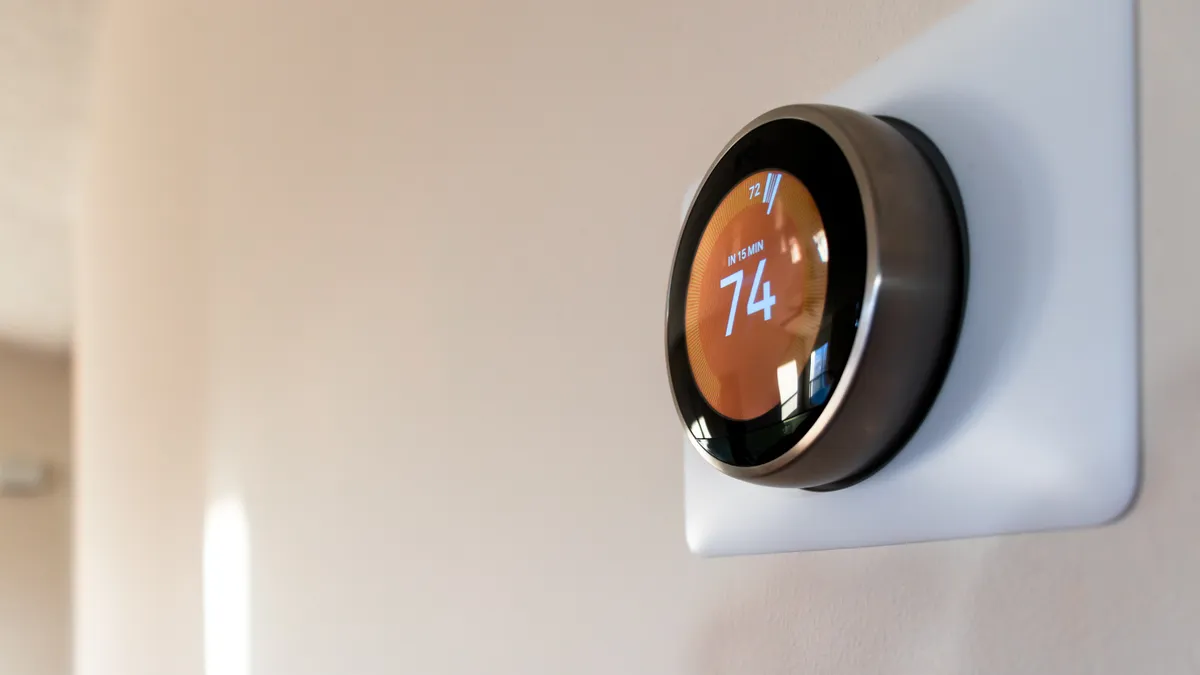At the age of 10, Alison Flynn Gaffney was struck by a car. Hospitalized for weeks, with a shattered leg and a concussion, she spent many months in recovery, relearning how to walk. The compassionate care she received, from paramedics and rehab specialists to the environmental services team that cleaned her room, left a deep impression on her, inspiring her career in healthcare administration.

After college, Gaffney worked part-time as a unit healthcare clerk and later in infection control, surgical services, and inpatient and ambulatory settings. She initially wanted to be a pediatric intensive care unit nurse. But she realized that the emotional intensity of tending to children was overcoming her ability to keep the detachment required in a clinical role. “I cry after a good Hallmark commercial, even today,” she said.
She switched to the business side of healthcare, where she feels she is better positioned to influence outcomes. She worked with over 13,000 employees at a large academic healthcare system for five years before becoming president of the healthcare division at JLL. Facilities Dive interviewed Gaffney about how healthcare facilities managers can prepare for a future likely to feature more sophisticated technologies and a greater focus on sustainability.
Editor’s note: This story has been edited for length and clarity.
FACILITIES DIVE: How do you envision the integration of colocation services impacting the convenience and efficiency of healthcare?
ALISON FLYNN GAFFNEY: I see a lot of opportunity, moving forward, to co-locate services. If you're [scheduling] your annual physical, and that requires imaging or lab work, are there opportunities [to schedule them] at the same time? Many of the older buildings within healthcare systems have not been built with that in mind. If you're looking to staff a whole host of buildings, versus one building that has things co-located, it makes it easier for employees, caregivers and patients. I think it's a necessary component of builds and how we look at restructuring existing space for that ease of access.
There are more scheduling programs that can do that automatically. If a patient calls up for a particular type of procedure, service or clinic visit, there are algorithms that will tell the team member what other testing is needed, and then that can be scheduled [at the same time]. I think we’ve all been patients. You don’t want to spend extra time, you don't want to make multiple visits and try to find parking [or] spend your dollars on transportation multiple times, if you don't have to. There's an awareness throughout the industry that's an opportunity for healthcare organizations to figure out how to partner with companies in colocation services.
How does the expansion of colocation services impact facilities managers?
There's a strategic view to bring access to the patient right to our communities, versus having one location where someone might have to travel a great distance to receive care. So, I think our models of the future are focused on ambulatory settings: Creating an ambulatory clinic or freestanding surgery center, for example, that has an imaging component, a separate radiology clinic, a laboratory, and a pharmacy and so on. For facilities management, it's about being at the table with the leaders of the organization regarding strategic planning and builds for the future and how those investment dollars are being spent. From an economic standpoint, how [do] you match your staff with locations? Are you asking a staff member to be the facilities manager in a location that's 50 miles from their home, or do you have a location that's closer to where they live? That makes it a more viable and interesting job opportunity for them. And facilities management teams are responsible for that square footage 24/7, 365 days a year. If you don't have the internal resources, do you look at mobile opportunities or technology that can support [your activities], from preventive maintenance to more predictive maintenance? Facilities management jobs get larger as healthcare systems expand and mergers and acquisitions happen. Many of our larger health care systems cross over regions. So, it's [about] looking at mobile engineering services, in-house facilities management or other technologies that can help support the efficient and safe running of all those physical assets.
You’ve said before that labor shortages are here to stay. How can healthcare facilities managers bridge that gap?
We must figure out different ways to educate communities at younger ages, perhaps starting even in middle school. How do we get people excited about careers in healthcare and facilities management? Education, to me, is first and foremost — [education about the] career pathways that individuals can have within healthcare facilities management, environmental services, patient advocacy and even diversity, equity and inclusion roles. At a more macro level in the healthcare industry, [we’re seeing] the need for [staffing] more retail clinics or ambulatory components. Once someone is in our organization, it’s also about how we can keep them and make sure there’s education, training, development and access to support and advocacy so that they feel like they are part of the healthcare delivery system, mission and solution.
What are the potential risks of not involving facilities managers in the early stages of expansion or restructuring projects?
There are hidden costs if you don't include stakeholders in the planning process. You don't want to spend hundreds of millions of dollars on building a patient tower, only to find out that someone didn't check the size of the rooms that were required or what public services [it needed]. Of course safety, regulatory [compliance] and the right financial budgeting have to be top of mind. And who’s better to be leading that process than the facilities management team? That’s their job, and that's what they're doing every single day. No one knows your space like you know your space. The square footage of a hallway is different from the square footage of an emergency room or an operating theater. What are the exposures to risk by building [a structure] one way compared to another way? Then you go into all the aesthetics and experience components and parking access [to] make sure that everything is part of the planning process. I have been part of leading [such efforts] in the past. You have 20-30 people around that table. I find that the best solutions, whether it's brick and mortar or a virtual experience, come from having diverse voices around the table.
Earlier this year, the U.S. Department of Health and Human Services introduced a pledge, urging hospitals to halve their greenhouse gas emissions by 2030. But many healthcare units are struggling to calculate their emissions and do carbon accounting, especially on tight budgets. How can healthcare facilities managers balance financial constraints with the need to reduce their carbon footprint?
That starts at the C-suite, where [executives] can make it clear that [sustainability] is a tenet of their organization. I think that's an opportunity, as an industry, to be bold and take that on as part of a core tenet of patient care and health care delivery. Many healthcare systems around the country have agreed to that. The million-dollar question is, then, “How do I deliver on that?” It’s about a phased approach, a financial commitment to support those initiatives [and] a good accounting of cost savings. At a former employer, we saved over a million dollars just by changing light bulbs and looking at the HVAC systems. There are small steps that can lead to real savings — cost savings as well as [an] ability to look at your community and say, “We are being good fiscal and environmental stewards.”
Energy constraints are real. The healthcare industry, which is a large consumer of energy, must continue the commitment forward and realize it will take some investments to get there, resources and capital as well as people. Make sure you have the right experts, either in-house or through a partnership, to help you expedite [that process] and not make mistakes in planning and development.
Are renovations more economically feasible, in some instances, than new builds?
Renovation can typically be less expensive, but if you're cutting costs at all ends, that typically doesn't produce a great environment or a great outcome. Smaller spaces are probably the most manageable. But there is the thought that investing dollars and creating new space that can be up to code and which can provide the highest level of experience, access and safety, built right from the start, will end up saving an organization money in the long run. In capital-strapped or constrained organizations, sometimes renovation is the only option. And that's not a bad thing. It's about making sure you're utilizing your dollars in the most effective way.
What space utilization techniques would you recommend for space-constrained locations?
There are different ways to build a healthcare [unit at a] retail center or a shopping environment. As long as you can renovate it safely, there's a lot of opportunity to expand services or take programs or people from a clinic or hospital setting to free up space to create new patient beds or new clinical components. You have a renovated space, or a new space, that houses the people that might be from a support service or an education standpoint, who don't necessarily need to be directly in a hospital to be able to do their jobs. I think empty office space and other locations might have opportunities to be filled and utilized [for healthcare], which creates opportunity for the organization that is leasing or renting that space as well as for the owners.
What are your words of wisdom for today’s healthcare facilities managers?
Facilities management teams are critical components of the success of a healthcare organization and the patient care delivery system. As soon as someone walks into a [healthcare unit], it is the facility that they see. If things are broken and paint is chipped and things are not looking great, there's an unfortunate automatic perception that there might be a potential bad experience awaiting that individual. If the facility is bright and clean and accessible, everything is working for the team members, and then for the patients and community served, facilities management is cheering in the background of that. Lobby and advocate to be at the table to help in the growth and development and current state of your organization. From cooling, heating and access to making sure the environment is safe, use your voice out loud. Speak up, and ask to be part of the planning. There’s a quote that I love: It's never too late to be what you might have been.
A previous version of this article misrepresented the details of the role Gaffney had prior to joining JLL. The article has been updated to reflect that Gaffney worked with over 13,000 employees at a large academic healthcare system before becoming president of the healthcare division at JLL.



















